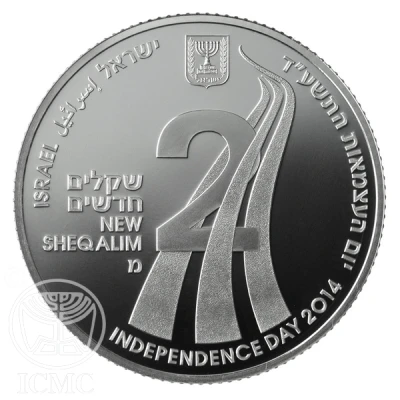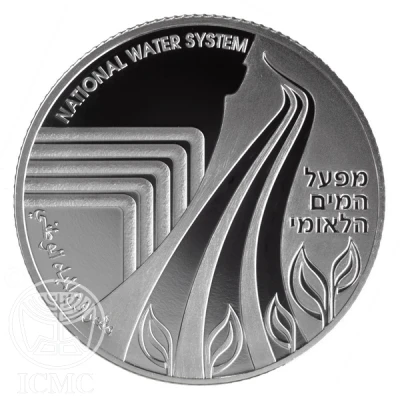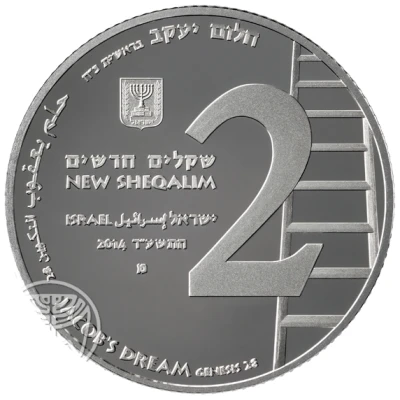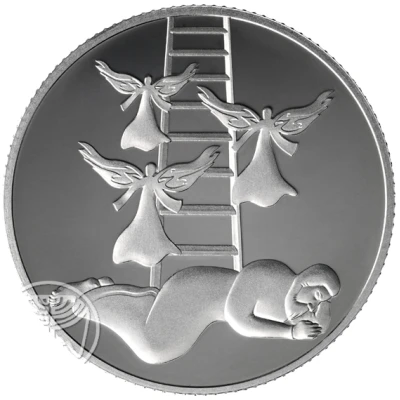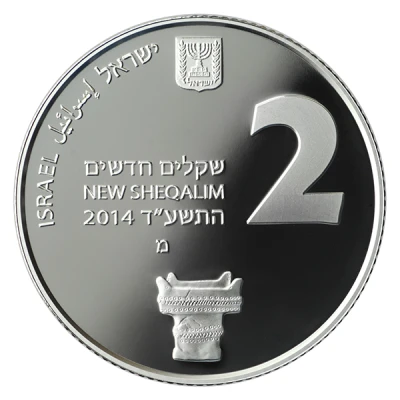
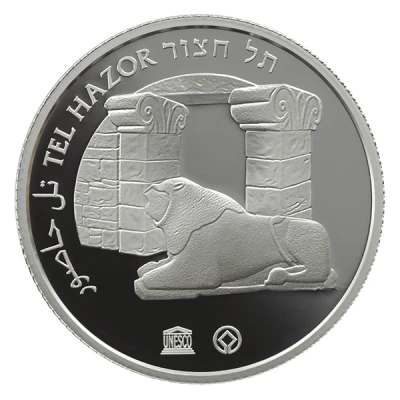

© Israel Coins and Medals Corp.
2 New Sheqalim Tel Hazor
5774 (2014) year| Silver (.999) (Copper .001) | 31.1 g | 38.7 mm |
| Issuer | Israel |
|---|---|
| Period | State of Israel (1948-date) |
| Type | Non-circulating coin |
| Year | 5774 (2014) |
| Calendar | Hebrew |
| Value | 2 New Sheqalim 2 ILS = USD 0.52 |
| Currency | New Shekel (1986-date) |
| Composition | Silver (.999) (Copper .001) |
| Weight | 31.1 g |
| Diameter | 38.7 mm |
| Shape | Round |
| Technique | Milled |
| Orientation | Medal alignment ↑↑ |
| Updated | 2024-10-05 |
| Numista | N#93708 |
|---|---|
| Rarity index | 93% |
Reverse
UNESCO and World Heritage Sites Emblems. Major archaeological findings at Tel Hazor: basalt lion orthostat from the Canaanite period, late Bronze Age, Royal fortress gate from the Israelite period, border inscription "Tel Hazor" in English, Hebrew and Arabic.
Scripts: Arabic, Hebrew, Latin
Lettering:
تل حاصور TEL HAZOR תל חצור
UNESCO
Engraver: Eitan Hendel
Edge
Reeded
Comment
Situated north of the Sea of Galilee, Tel Hazor is the largest biblical-era archaeological site in Israel. Like Tel Megiddo featured on the previous coin in this series, Tel Hazor is a an archaeological mound, a testimony to the Canaanite cities of the Bronze Age and the Biblical cities of the Iron Age, that had impressive levels of town planning, architecture, fortifications and water collection technologies. The City of Hazor was built on fertile soil and strategically located on an important trade route running from Egypt in the South to Mesopotamia in the north.The upper city of Hazor, known as the "Acropolis", was the first area to be settled in the third millennium BCE in Canaanite times, early Bronze Age, while the lower city (the fortified enclosure) was settled around the 18th century BCE. Canaanite Hazor, which appears to have been one of the largest, strongest and most central cities of the time, was destroyed by the Israelites under the leadership of Joshua (Joshua Chap. 11). The city was rebuilt and fortified by King Solomon (1 Kings 9) in the tenth century BCE. It prospered in the days of Ahab and Jeroboam II in the ninth and eighth centuries BCE, but was finally destroyed by the Assyrians (2 Kings 15) in 732 BCE.
Archaeological excavations at Tel Hazor have revealed remains dating from the Bronze Age – sanctuaries, fortresses, palace, orthostats (stone slabs set at the base of a wall), basalt sculptures and plates with Hieroglyphic inscriptions. Remains of the Israelite period include a high cultic place, a six-chambered gate and casemate wall from the time of King Solomon, similar to those discovered at Megiddo. A solid wall fortification and buildings, including a store house, thought to date from the time of King Ahab, have been found. In addition, a sophisticated water system, very similar to the system found at Tel Megiddo, has been revealed.
Representing an interchange of human values throughout the ancient near-east and being a testimony to an ancient civilization with a high level of engineering and technology, Tel Hazor was recognized by UNESCO as a World Heritage Site, in 2005.
Interesting fact
The 2 New Sheqalim (Tel Hazor) 5774 (2014) coin from Israel features a unique design that showcases the ancient city of Tel Hazor, which was once the capital of the Northern Kingdom of Israel. The coin's design includes an image of the city's famous gate, which was discovered during archaeological excavations in the 1950s. The gate is depicted in intricate detail, showcasing the ancient architecture and craftsmanship of the time. This coin is a beautiful representation of Israel's rich history and cultural heritage.
Price
| Date | Mintage | VG | F | VF | XF | AU | UNC |
|---|---|---|---|---|---|---|---|
| 5774 (2014) מ | 2800 | - | - | - | - | - | - |
Values in the table are based on evaluations by sales realized on Internet platforms. They serve as an indication only for 2 New Sheqalim (Tel Hazor) 5774 (2014) coin.
